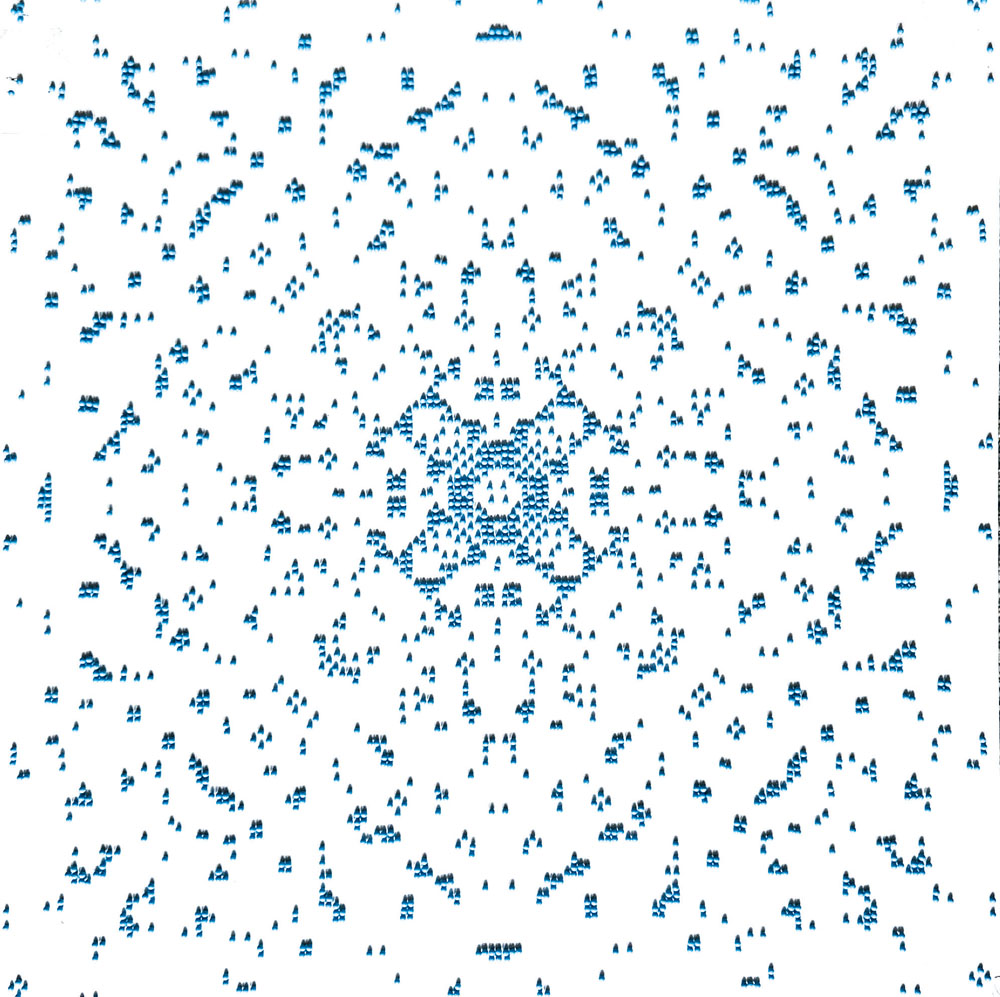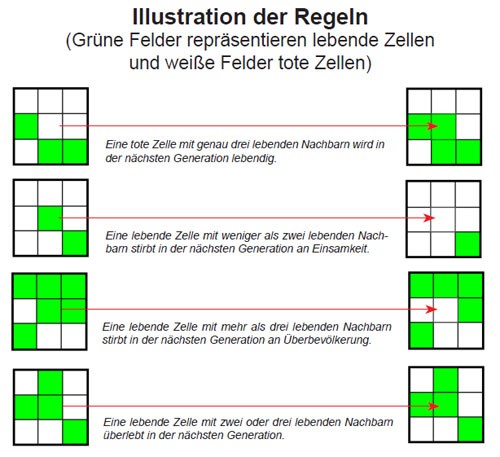| Stomachion | |||||
 |
John Conway's „Game of Life“ The 'Game of Life' is a well-known cellular automaton developed by the famous mathematician John Horton Conway (1937-2020). It consists of a grid of cells, each of which can be in one of two possible states: alive or dead. The state of each cell depends on the states of its eight neighbors, and the states of all cells are updated simultaneously. The rules of the 'Game of Life' are depicted below. These simple rules can produce remarkably complex patterns and behaviors, often used as an example of complex systems in nature and science. Although the Game of Life was designed as a game and had no specific applications, it has led to significant discoveries and applications in many fields, including artificial intelligence, the theory of complex systems, and mathematical biology. An important discovery made with the Game of Life is the emergence of self-organizing structures and complex behavior from simple rules. The Game of Life has shown that even very simple rules for cell interaction can lead to a remarkable variety of patterns and behaviors, often difficult to predict. Therefore, the Game of Life remains an important part of research in the field of artificial intelligence, computer science, and mathematics.
|
Doubly repeated application of the 'Game of Life' on the pattern of Gaussian prime numbers in the complex plane. Pins on lightweight board (60 x 60 cm). |
|
|
